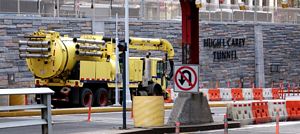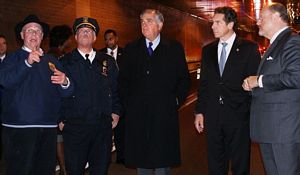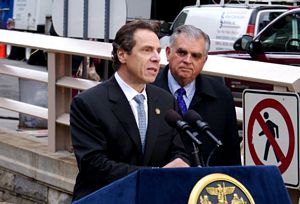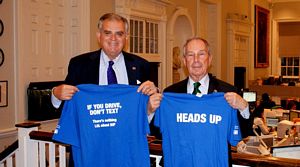|
By accessing or using The Crittenden Automotive Library™/CarsAndRacingStuff.com, you signify your agreement with the Terms of Use on our Legal Information page. Our Privacy Policy is also available there. |

New York's transportation recovery continues, as once-submerged Carey Tunnel reopens
|
|---|
|
|
New York's transportation recovery continues, as once-submerged Carey Tunnel reopens
Fast Lane
U.S. Department of Transportation
November 14, 2012
With the reopening of the Hugh L. Carey (Brooklyn-Battery) Tunnel yesterday, New York marked a significant milestone in its effort to restore transportation after Hurricane Sandy. And I was proud to be in New York
to celebrate that achievement with Governor Andrew Cuomo and Metropolitan Transportation Authority (MTA) Chairman Joe Lhota.
In the wake of this storm, the President called us to action, asking that we do all we can to support our state and local partners as they work to restore vital transportation infrastructure. President Obama made it clear that our mission was to listen to governors and help them get the assistance they need.
And that is
exactly what we’ve done. Less than 24 hours after Sandy made landfall, DOT issued quick release emergency funds to begin repairing roads, highways, seawalls, bridges and tunnels, with $10 million going to help New York. In total, we’ve disbursed $29 million to states recovering from Sandy-related damage.
These funds were issued as part of an
extensive federal effort coordinated by FEMA, and you need only to see the scale of recovery operations in Lower Manhattan, including the Carey Tunnel, to gauge the unprecedented responsiveness of that effort.
Reopening the first of the tunnel's two flooded tubes required pumping an estimated 43
million gallons of water. And it wasn't just water; the flooding included silt, mud, oil, and debris. Indeed, as Governor Cuomo said, "It was as if the Hudson and East Rivers--and all they carry--met in the middle of Lower Manhattan."
When we toured the recovery work in the second tube, which is expected to reopen in a couple of weeks, the extent of Sandy's damage was obvious. Both Governor Cuomo and Chairman Lhota described the flow of water into the tunnel as "a whitewater river," and the recovery team leaders pointed out that we couldn't see any watermarks on the tunnel's walls because the surge filled the tunnel from floor to ceiling.
The magnitude of New York's recovery thus far is a tribute not only to the efforts of the Governor and Chairman Lhota to mobilize all available resources, but also to the men and women who have been working around the clock to reopen New York's roadways, tunnels, and transit lines.
And yesterday, I also had the chance to visit City Hall, meet with Mayor Michael Bloomberg and NYC DOT Commissioner Janette Sadik-Khan, and see a building full of people busily responding to residents' recovery needs.
As part of his
NYC Restore initiative, Mayor Bloomberg has established eight restoration centers in hard-hit areas around the city. Besides filling the need for basic supplies such as food, water and clothes, these one-stop drop-in locations will offer assistance getting food stamps and Medicaid, applying for FEMA funds and small business loans, and securing support from other federal and local agencies.
In what could be a new model for Federal disaster response, the
Obama Administration is working night and day to restore normalcy to storm-stricken communities. For us at DOT, that means we won’t rest until transportation is up and running and families impacted by Hurricane Sandy can get to work, school, and everywhere else they need to go.























